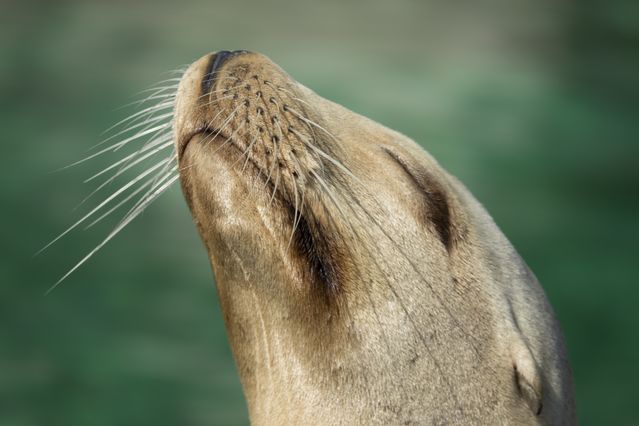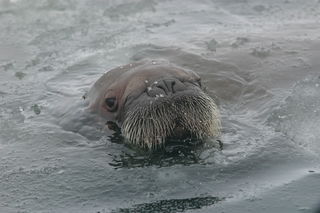Environment
Marine Mammals Actively Explore Their Environment With Whiskers
Study shows seals, sea lions, and walruses could be whisker specialists.
Posted March 12, 2020 Reviewed by Matt Huston

Whiskers aren’t just decorative. Whisker touch is an active sensory system. Most mammals have whiskers and a few, like rats and shrews, are whisker specialists – actively controlling their whiskers to guide exploration, foraging, and navigation.
Pinnipeds (the group that includes seals, sea lions, and walruses) also have highly prominent and sensitive whiskers. Are they as adept at using their whiskers as land-living whisker specialists?
In a new study, Robyn Grant of Manchester Metropolitan University led a team of researchers in measuring and comparing whisker movements and control in three different Pinniped species: California sea lions, Harbor seals, and Pacific walruses.
Grant and her colleagues designed a task to encourage whisker movements that all the animals could perform. Termed fish sweeping, it involved a trainer moving a fish over the whiskers of an animal from one side to another while a video camera captured the head and whisker movements.

Whisky Business
All three species positioned their whiskers toward the fish by orienting their heads. While head movements roughly positioned the whiskers, all species also moved their whiskers during the task.
Some species also demonstrated whisker control behaviors that have only previously been observed in terrestrial mammals. For instance, the walrus engaged in head-turning asymmetry (in which whiskers move ahead of a head rotation to scan the area that the head is moving into) and the walrus and sea lion engaged in contact-induced asymmetry (where whiskers are positioned asymmetrically toward an object).
However, Pinnipeds do not perform the rapid back-and-forth whisker movements that characterize terrestrial whisker specialists. Grant says that rats and other terrestrial whisker specialists scan with their whiskers constantly, moving them back-and-forth up to eight times a second.
“Since these species are in water, they are not able to do that,” she says. “It would be exhausting and energetically costly to move their whiskers so quickly through water. Pinnipeds have to be more careful with when they move their whiskers; they push them forward and orient them when they need to.”
The Role of Whiskers
Grant and her colleagues also noted significant differences between the Pinniped species, both in terms of whisker positioning and movements.
Walruses, for instance, have many densely packed whiskers that are more forward-facing than the other species. They don’t move them around as much as seals and sea lions. Walruses forage for small, stationary prey in murky water. They move their heads to use their whiskers to scan the seabed to find prey, much like using a brush.
Seals and sea lions, on the other hand, are capable of larger whisker movements. They have fewer whiskers than walruses, spread out on the sides of their faces.

“Both the sea lion and the Harbor seal move their whiskers in a similar way and we think it’s related to the way they orient toward fish while hunting,” says Grant. Whisker movements might be important to guide foraging in species like these that hunt moving prey.
Grant was especially impressed with the California sea lion’s whisker moves and is focusing her future research on active touch sensing in these animals.
“Now that we’ve learned that sea lions move their whiskers the most and are able to orient the most to contact, we want to see if they are capable of task-specific whisker movement—using their whiskers much like we move our fingertips,” says Grant.
“For example, if you train them on an object softness task or a texture or size task, would they make different whisker movements depending on the task? We, as humans, would make lateral fingertip movements to discriminate textures, squishy movements on a softness task, and feel around the edge of an object to judge shape or size.”
This study marks the first time scientists have seen Pinnipeds repeat whisker behaviors observed in true whisker specialists like rats. Seals, sea lions, and walruses have a great deal of control over their whisker movement and positioning, indicating that touch sensing is likely an important sensory modality in the lives of these marine mammals.
References
Milne, A.O., Smith, C., Orton, L.D., Sullivan, M.S., and Grant, R. A. Pinnipeds orient and control their whiskers: a study on Pacific walrus, California sea lion and Harbor seal. J Comp Physiol A (2020). https://doi.org/10.1007/s00359-020-01408-8.


